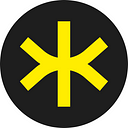Want to tap into the power of AI chatbots but are unsure how to embed one into your product or how to train the bot with relevant data? Let’s take a close-up look at which types exist and what tech stack you need to build your AI chatbot.
If you’re still questioning AI’s capabilities to boost business efficiency and facilitate routine procedures, take a closer look at the statistics. AI chatbots are forecast to handle around 95% of customer service tasks by 2025. Chatbot automation is around the corner, why not jump on the bandwagon?
What Does an AI Chatbot Imply? 🤖💬
AI chatbots are advanced software programs that use machine learning, natural language processing (NLP), and AI algorithms to communicate with people. Think of them as your super-smart digital buddies trained on enormous datasets. These chatbots can swiftly find answers to your most challenging questions and reply either via text or voice.
What Types of AI Chatbots Exist?
Did you know that AI chatbots are not only good at talking to you? Their capabilities can surprise you as they go way beyond support windows that pop up on websites. Let’s dive into the most common types of AI chatbots that can help you augment your business:
🟡 Retrieval-Based chatbots
The so-called librarians give predefined replies to your questions using information from a knowledge base.
🟡 Generative Chatbots
Google’s LaMDA is a shining example as it comprehends your questions and is able to provide full-fledged answers.
🟡 Task-Oriented Chatbots
These systems are designed to assist users in achieving specific goals (e.g., making restaurant reservations or booking flights).
🟡 Conversational AI Assistants
Apple’s Siri or Amazon’s Alexa are advanced chatbots that can engage in free-flowing conversations, and recognize the context, implications, and intent.
🟡 Chatbots with Multimodal Interfaces
Generating brand-new content from images, tables, texts, videos, and more is exactly what such chatbots are brilliant at. Plus, they can be utilized in an AR/VR environment.
🟡 Emotionally Intelligent Chatbots
These systems can conduct sentiment analysis to identify the tone and mood of the user and respond to them correspondently.
🟡 Domain-Specific Chatbots
In-depth knowledge of a specific topic is what makes these chatbots unique as their expertise allows them to give profound and reliable responses.
There’s more to this list as the industry of AI chatbots is evolving and new types are not far off.
What Tech Stack Do You Need to Build an AI Chatbot? 🛠️🧰
Building an AI chatbot is a challenging and time-consuming process, so you’d better know beforehand what tech stack you need. Here are the main tools you should take note of:
1. Natural Language Processor (NLP) helps your chatbot comprehend information and communicate with people in a natural way. Teams often use Amazon Lex or Google DialogFlow for this.
2. Cloud Infrastructure provides scalable computing power, storage, accessibility, and other capabilities required for the seamless operation of your chatbot. Microsoft Azure or AWS are common options.
3. AI/ML Software is the last stage of creating a human-like chatbot that is able to cater to your needs. For instance, PyTorch is a popular ML library, Scikit-learn is a common choice for analyzing data and building ML algorithms, and TensorFlow can be used for deep learning models.
And that’s just the tip of the iceberg. Dive into the full guide on how to build a chatbot from scratch in 6 steps ⤵
